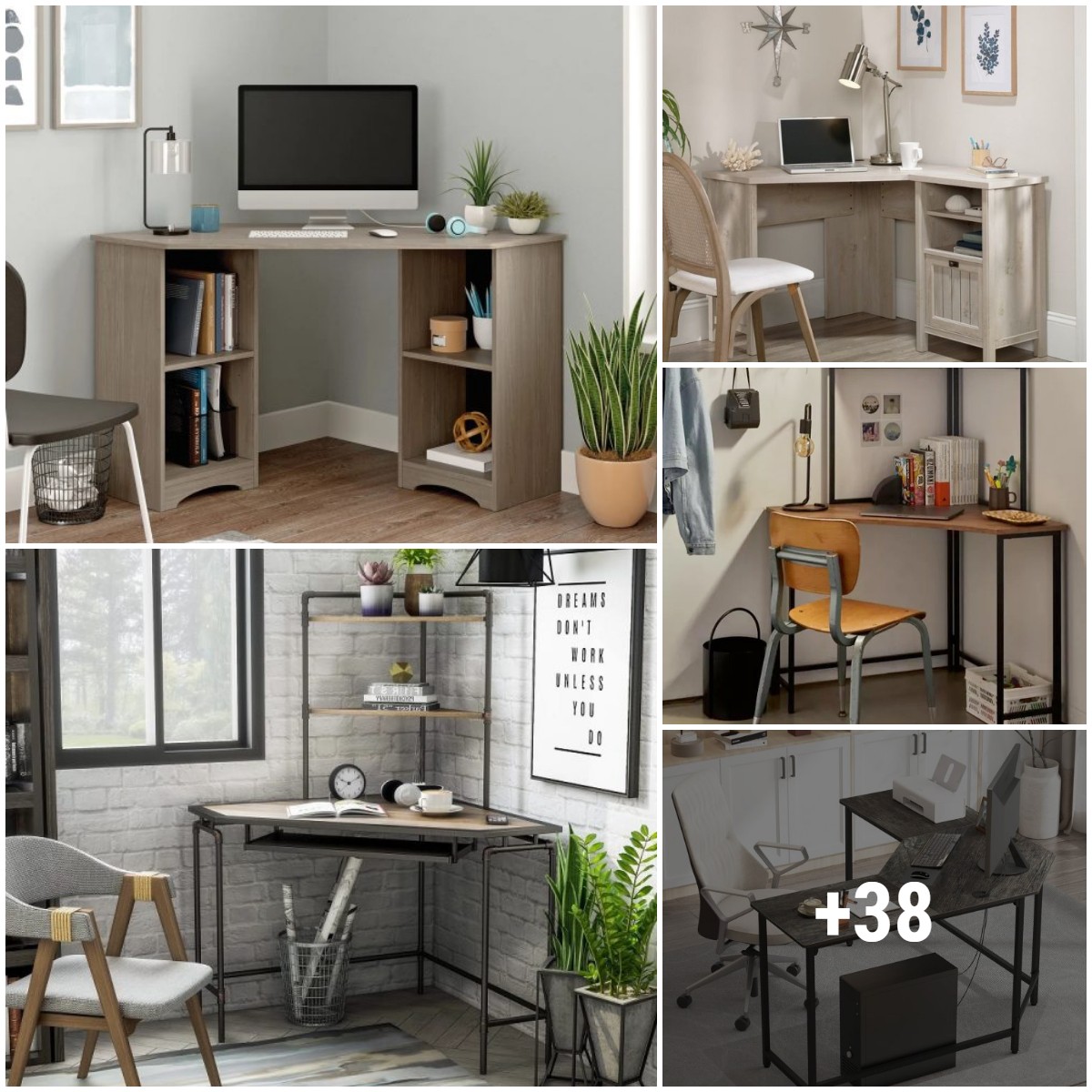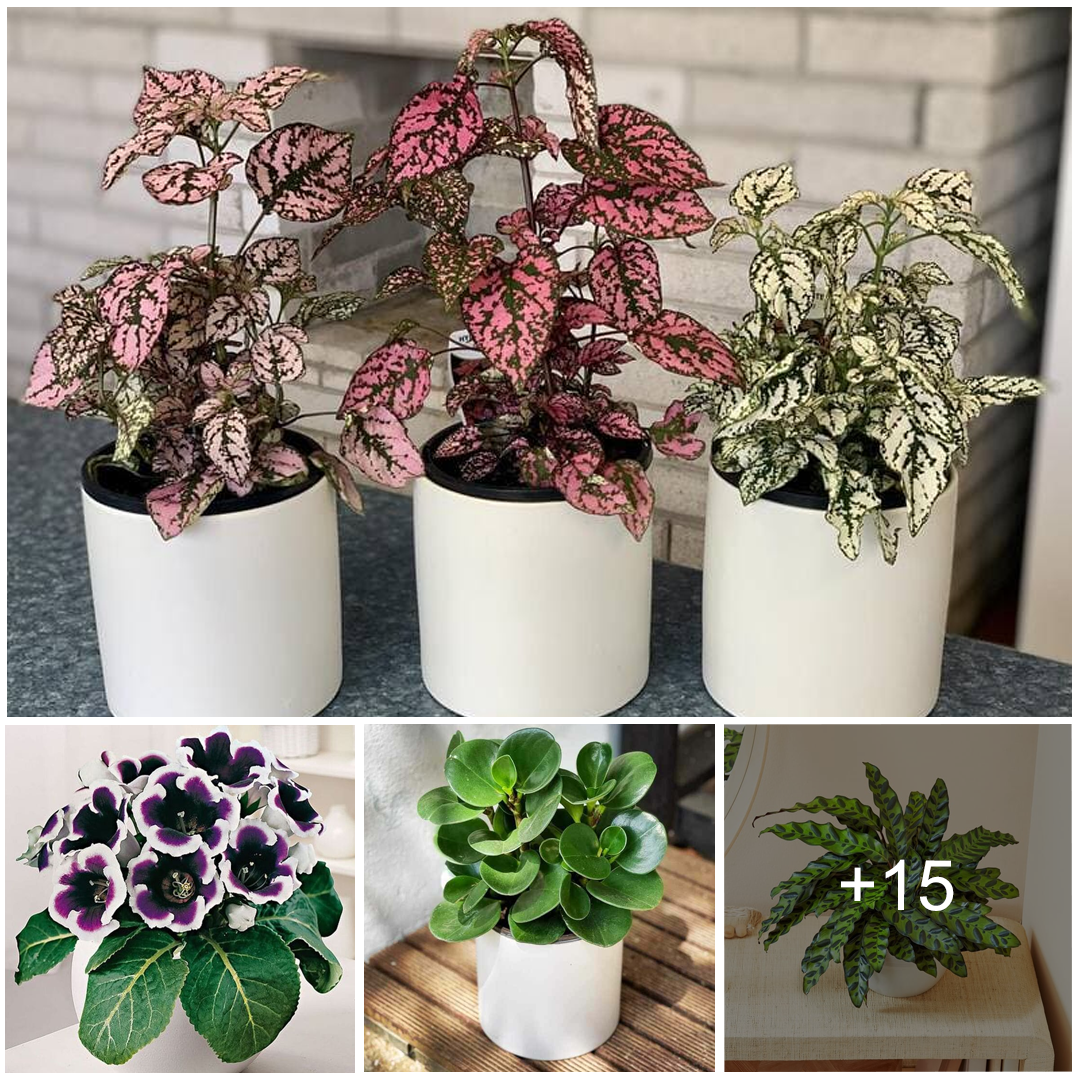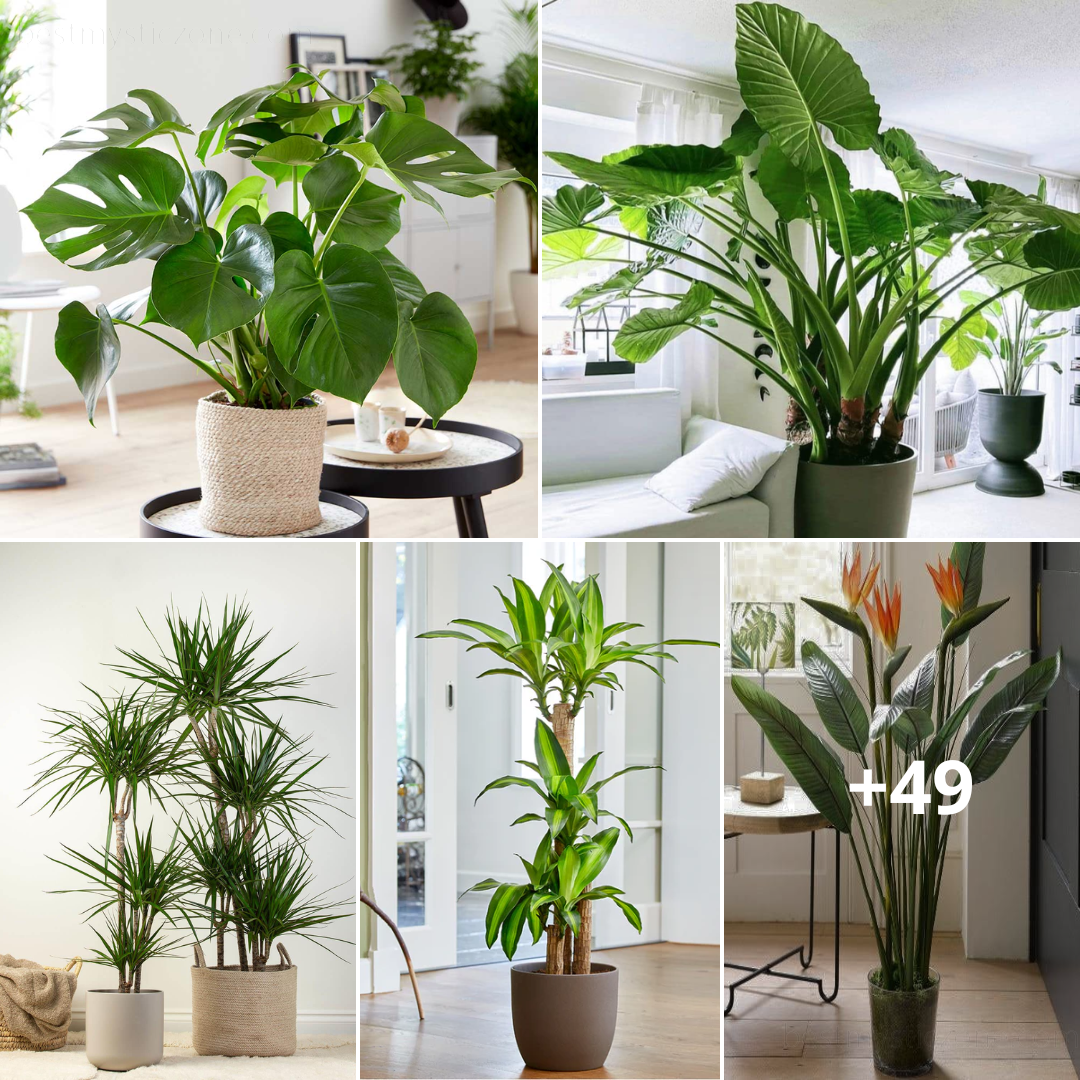Crotons are bright and hardy plants that are slowly gaining popularity in the indoor plant community. Although they are not particularly challenging to care for, there is one common problem that many croton growers encounter – leaf drop. There are many causes for this common problem, but fortunately many fixes as well. In this guide, we’ll cover all the reasons why your Croton might drop its leaves and how you can fix it.
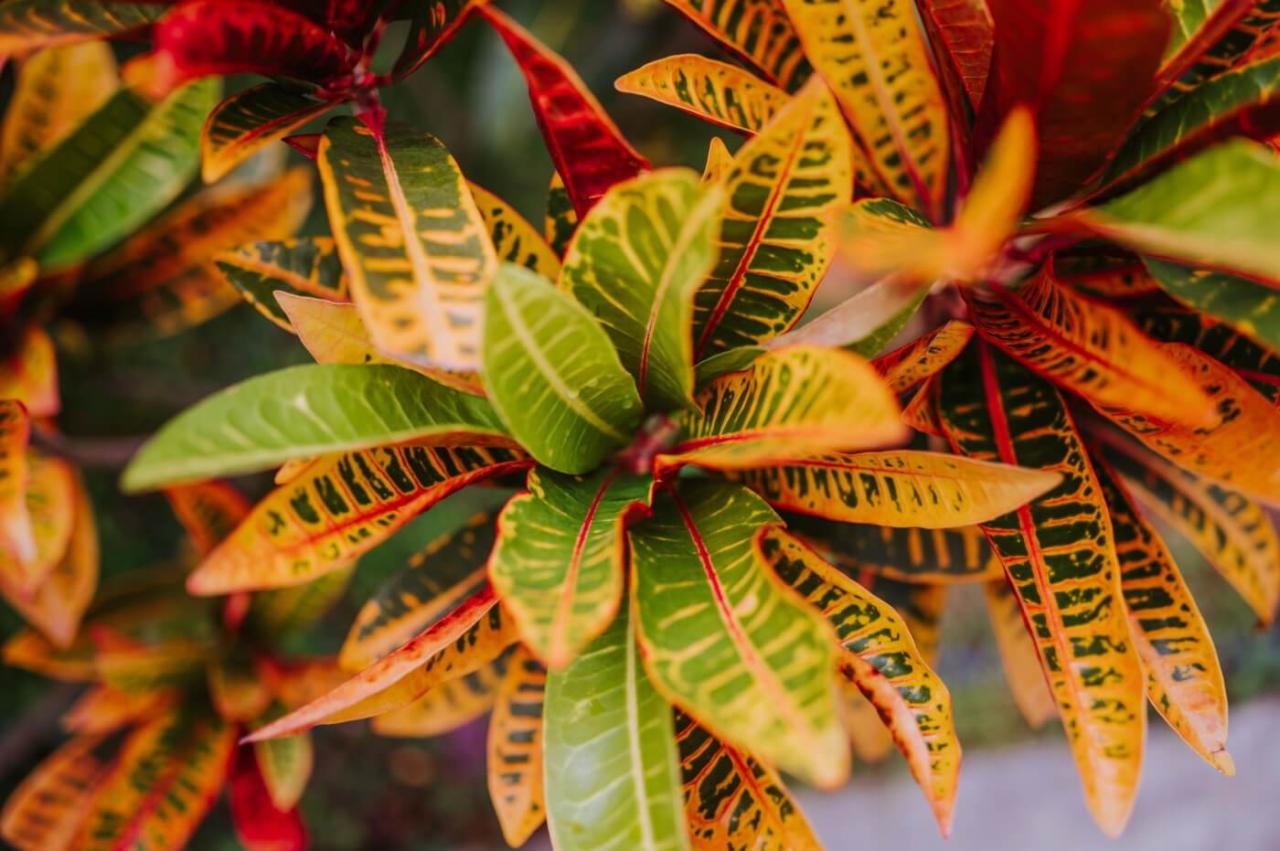
Croton that is losing leaves – important tips
Crotons typically drop leaves in response to environmental or management problems such as overwatering, underwatering, insufficient light, or improper temperature and humidity. Pests and diseases can also cause leaves to drop, as can age. Providing the right care and environmental conditions will limit problems with leaf fall in the future.
Common Reasons for Your Croton Plant’s Leaves to Drop
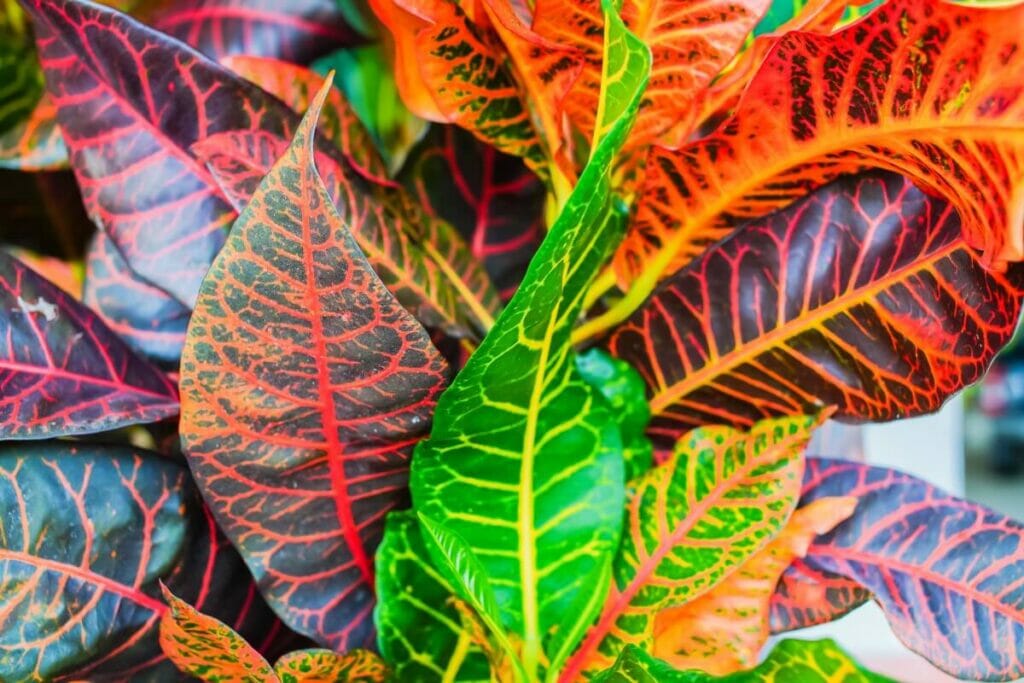
1) Overwatering
Overwatering is one of the most common – and unfortunately one of the most damaging – houseplant problems. Like many other houseplants, all types of Crotons need slightly moist soil that is never oversaturated. They cannot be left to dry out completely, but they also cannot handle excess water for long periods of time.
When the soil is too moist, the roots start to become soft and mushy, unable to absorb more moisture or transport nutrients around the plant. The leaves may begin to wilt and eventually drop the plant if not fixed.
Never water your Croton when the top layer of soil is still moist. Only use containers with adequate drainage holes and do not leave the pot sitting in a drip tray full of water. Likewise, if you use a pot cover, always remove the plant to water it and wait until all excess water has drained before putting it back in the cover.
If you have overwatered, start by repotting the plant. The fungus that causes root rot can live in the soil and continue to spread if not completely removed. Trim the affected roots back to healthy growth and water less frequently going forward.
2) Too dry conditions
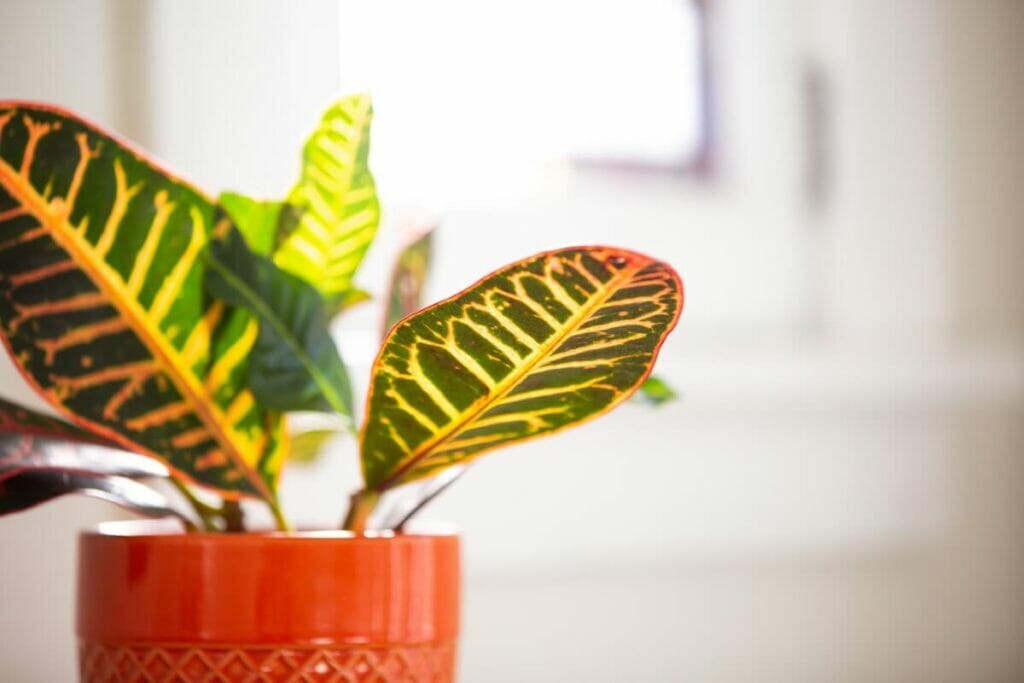
While overwatering is a common cause of crotons dropping leaves, underwatering is much more common. This plant’s thick stems and fiery waxy leaves lead some to believe that crotons prefer dry soil to moist soil. This leads to long periods between waterings, causing stress and leaf drop.
Crotons store some water in their thick leaves and stems, but thanks to their tropical habitats, they are happiest in consistently moist (but not soggy) soil. When deprived of this water, the plant becomes stressed and tries to conserve moisture by shedding excess leaves. If the conditions do not resolve, the plant will lose all its leaves and ultimately come to the end of its life.
If you have underwatered, the soil may have become compacted and hydrophobic. In this case, bottom watering is the best way to properly saturate the soil, prevent runoff and reach all the roots evenly. Increase the intervals between waterings, adding more as soon as the top 2 inches of soil has dried out.
Older plants can survive much longer periods without water than younger ones. But for them to grow their best, deep and consistent watering is preferred.
3) Temperature and humidity problems
Crotons’ tropical habitats have influenced not only their love of water but also the type of temperature and humidity they require. The fiery colors of the leaves allude to the types of conditions needed – incredibly hot and humid. Go too far from these conditions, and you may find your Croton dropping leaves every hour.
Humidity is usually the factor that comes into play when it comes to dropping leaves. At least 40% is required, but even this may be too low for some types. Aim for around 60% – 70% for a comfortable compromise between you and the plants.
If you need to increase the humidity around your plants, you have a number of options:
- Mist: Raises humidity temporarily but must be done several times a day to be effective.
- Pebble Trays: Raises the humidity marginally around the plant, but not enough to help if you’re well below 40%.
- Group plants: Slightly increases the humidity in that area, creating a mini microclimate in your home.
- Choosing rooms with high humidity: Bathrooms and kitchens near water sources are good places for crotons, as long as they get enough light.
- Humidifier: Expensive, but the best way to dramatically raise the humidity level if your air is very dry.
Temperature also plays a role in shedding leaves. These plants can handle temperatures down to around 40F but struggle in any temperature below that. They may react to this cold stress by shedding leaves to survive. Keep your Crotons in rooms above 65F throughout the year to avoid this problem.
4) Insufficient light exposure
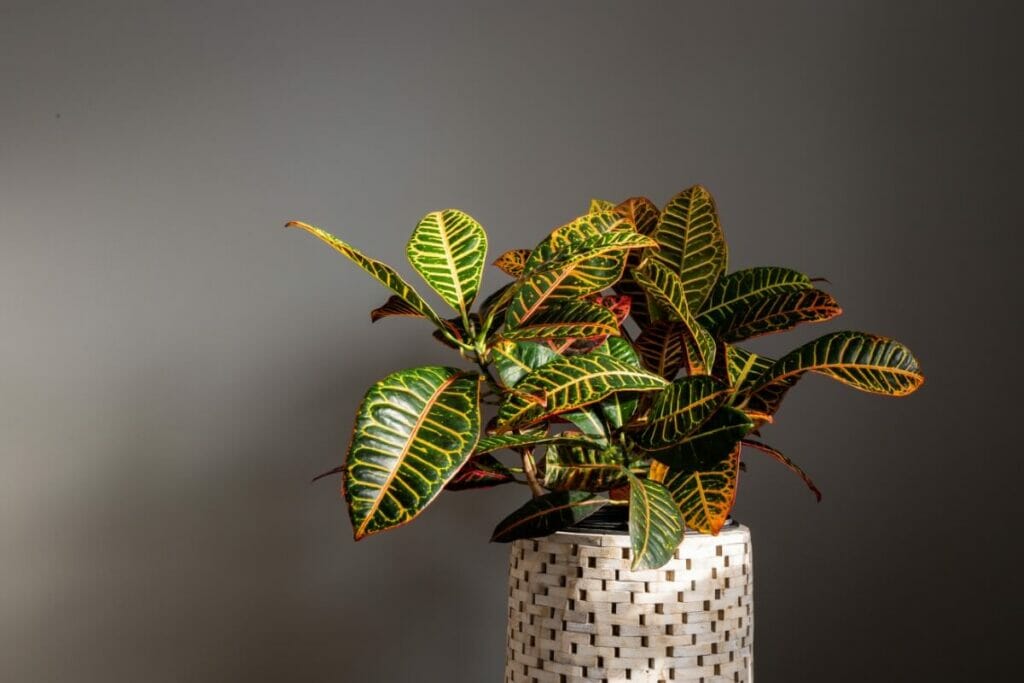
Crotons are light-loving plants that thrive in bright rooms with indirect light. They are not suitable for areas with low light and experience significant stress when they do not receive enough sun. You will notice several signs of this stress, from yellowing and dropping leaves to entire leaves falling off the plant completely.
This problem is definitely the easiest to fix – move your plant to a brighter area and growth should slowly return to normal. Avoid going directly to the opposite extreme of direct sun, as this caused burning and additional stress that could end up killing the plant. Slowly introduce your Croton to brighter areas until it is in the perfect area with bright indirect light and even an hour or two of direct morning sun.
Although less common, excessive sunlight can also cause the leaves to turn brown and fall off the plant. Crotons grown as houseplants will quickly burn if placed in intense direct sunlight. When they turn brown and crispy, these burned leaves will not recover and may eventually drop the plant entirely. Keep them out of direct light in the middle of the day and afternoons to prevent them from burning. For more, see our in-depth guide to the best position for croton plants in your home or office.
5) Pests and diseases Can cause croton plants to drop leaves
Crotons grown as houseplants do not experience as many pest and disease problems as those grown outdoors. But that doesn’t mean they’re immune to these problems. From thrips to anthracnose, many problems can affect your Croton and cause it to drop leaves.
Regularly check your plant for signs of pests and diseases. Some are visible, while others hide or only show symptoms when the problem is entrenched. Many pests can be controlled with an application of neem oil or a relevant insecticidal soap. Diseases are a bit more challenging to manage, requiring regular pruning and application of preventative sprays to stop the problem from spreading.
Instead of dealing with these problems when they arise, it is best to focus on prevention. Quarantine any new plants you bring in and make checking for pests and diseases part of your regular routine. Always take care of any problems immediately before they get out of hand and keep your plants as healthy as possible to help them fend off problems on their own.
6) Too much or too little fertilizer
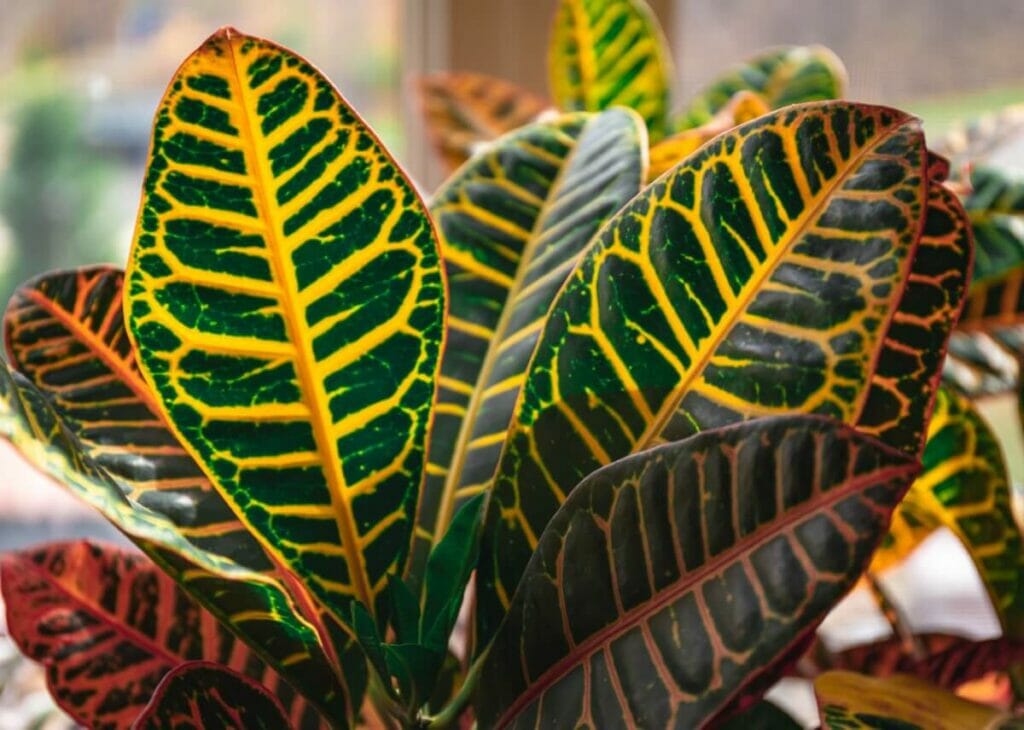
Nutrients are the foundation of your plant’s success. Having too much or too little of them and they can also cause your plant to fail. Crotons are not heavy feeders but grow best in containers when nutrients are replenished during the spring and summer growing seasons.
If your Croton has been in the same pot for years, it has likely used up all available nutrients in the soil. Without these, the plant cannot maintain the roots, stems and of course – the leaves – causing them to fall off. A schedule of repotting and regular fertilizing should resolve the issue and return your plant to good health.
The opposite extreme can also cause leaves to fall off the plant. Instead of helping the plant grow better, an excess of fertilizer in the soil causes the roots and leaves to burn and eventually drop the plant.
Never add more fertilizer than recommended on the package to avoid unnecessary damage. If you have over-fertilized, flush the soil with filtered water until it runs clear and hold off on fertilizing for a few months while the plant recovers.
7) Environmental shock or stress
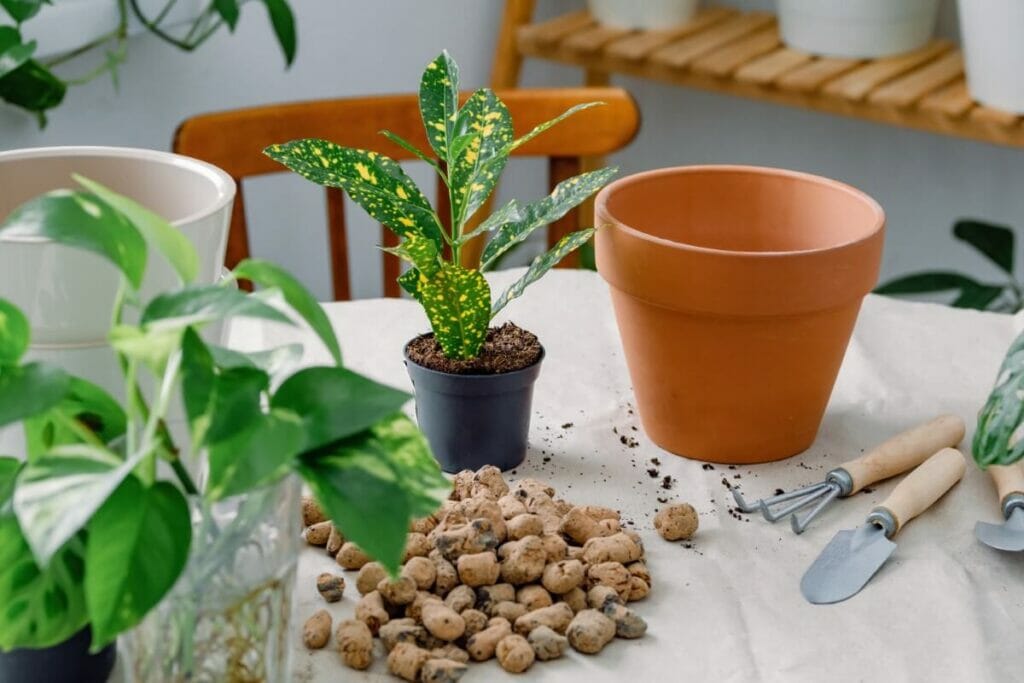
Like many houseplants, crotons do not appreciate changes in environments. Any dramatic change in conditions results in stress and shock, causing the plant to drop leaves to conserve energy and moisture to survive.
These are just some of the actions that can cause stress or push the plant into shock:
- Sudden changes in lighting conditions
- Inconsistent watering routines
- Sudden temperature changes, such as drafts
- Excessive pruning
- Repotting
- Reproduction
Handle your Croton gently and make subtle adjustments over longer periods of time to allow the plant to acclimate to its new environment.
8) The age of the croton plant
Dropping leaves is not always the result of a problem or cause for concern. Older leaves may begin to yellow and fall off the plant due to their age. This is part of the natural life cycle and has nothing to do with inadequate care.
Growing happy, healthy croton plants at home
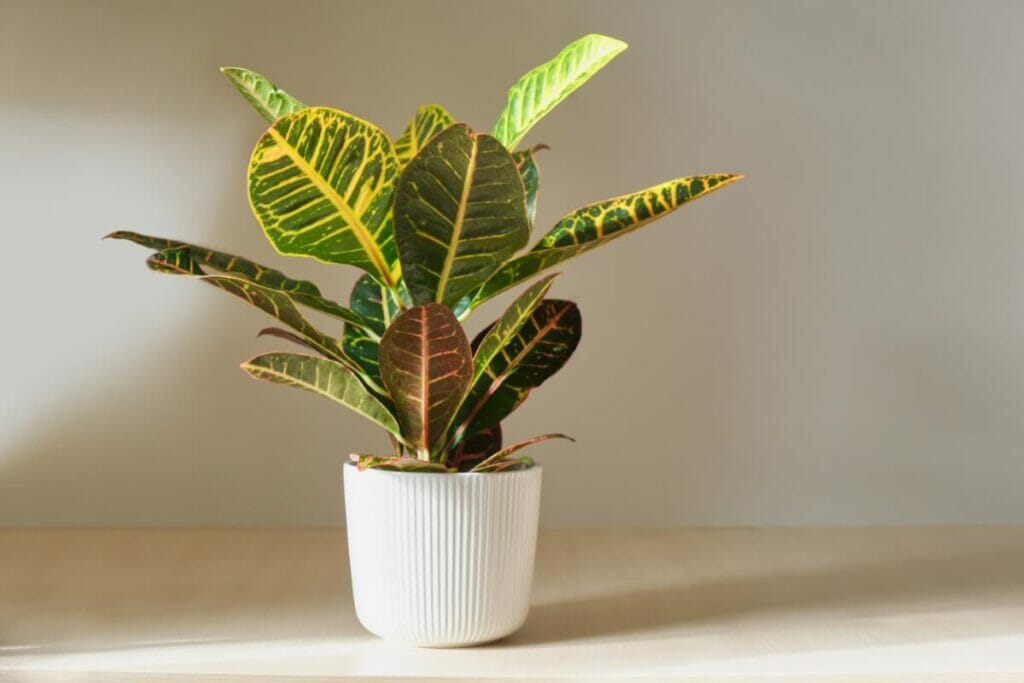
Follow these basic principles to keep your Croton happy and avoid problems with leaf loss in the future:
- Light: A full day of bright, indirect sunlight or an hour or two of mild direct morning sun. No direct light in the middle of the day or afternoon.
- Water: Water when the top 2 inches of soil has dried out.
- Temperature and humidity: Between 65F and 85F with humidity above 40%.
- Soil: Light and well-draining mixtures of potting soil with perlite and coconut or peat moss for improved aeration and moisture retention.
- Fertilizers: Feed every 4-6 weeks with a balanced houseplant fertilizer.
Frequently Asked Questions About Croton Plants That Drop Leaves:
A leaf or two will sometimes fall off the plant due to age. This is nothing to worry about and is part of the plant’s natural life cycle.
If the leaf drop problem is resolved, the plant will develop new leaves along the new growth. To encourage new growth, prune the branches back slightly.
These slow growers can reach maturity in about 2-3 years.
Summarize
Although worrisome, losing leaves in your Croton is no cause for panic. Find the most likely cause, apply the remedy and you should see new leaf growth in no time.
